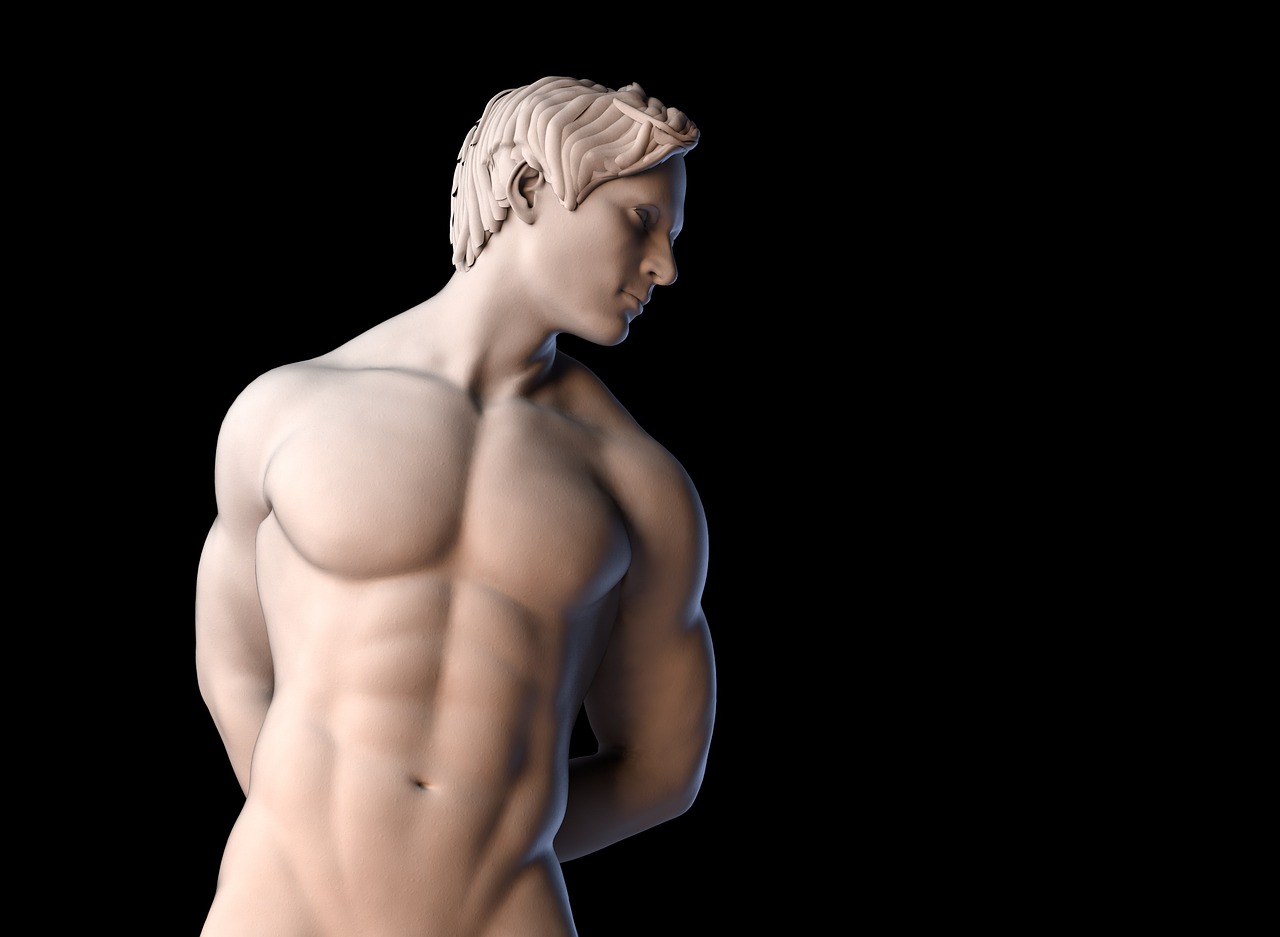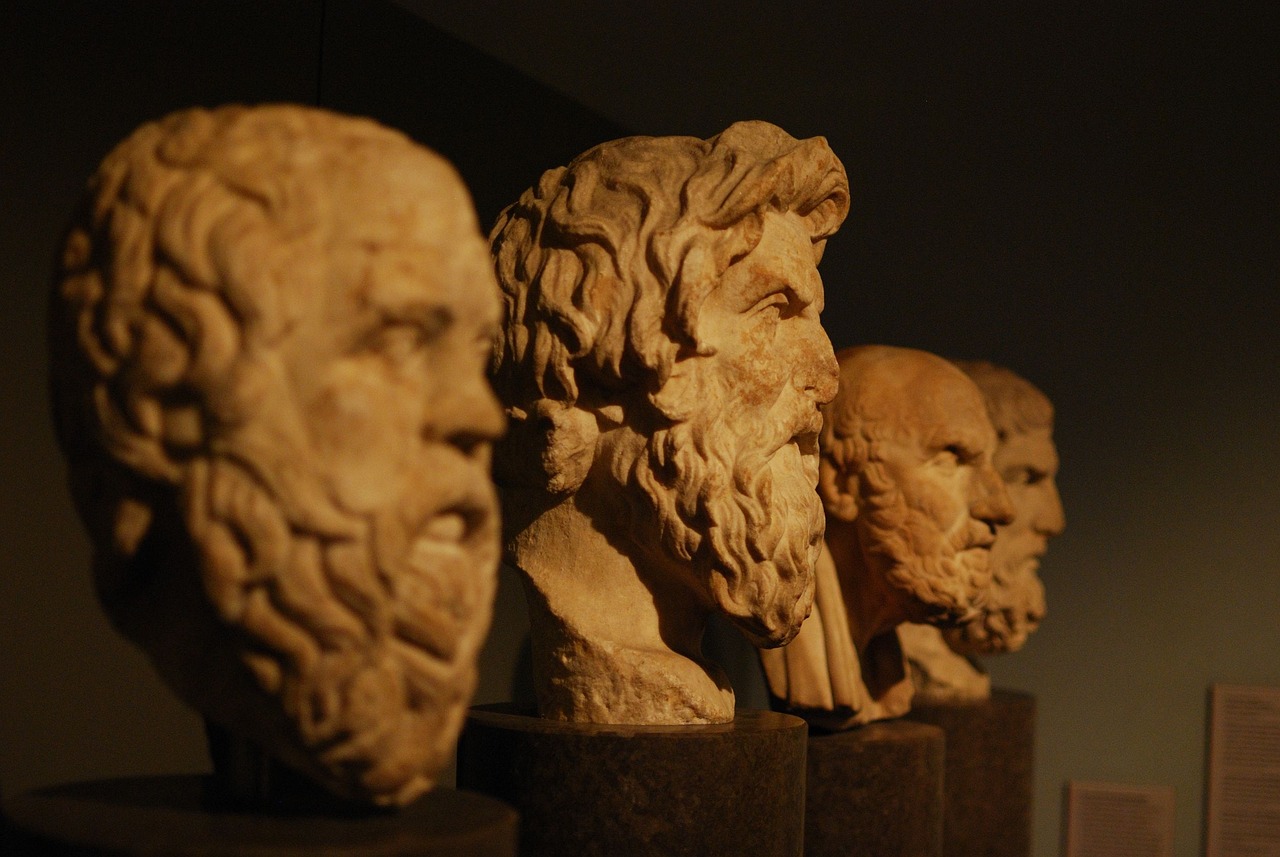Aristotle's Views on Metaphysics: A Comprehensive Analysis
Aristotle, one of the most influential philosophers in history, laid the groundwork for much of Western thought with his profound insights into metaphysics. His exploration of the fundamental nature of reality has captivated scholars and thinkers for centuries. In this article, we will delve into Aristotle's key metaphysical concepts, including his ideas on substance, causality, and the nature of change. By examining these foundational principles, we can appreciate their enduring impact on philosophy and our understanding of existence.
At the heart of Aristotle's metaphysical framework is the concept of substance. Aristotle distinguishes between two types of substances: primary substances and secondary substances. Primary substances are individual entities, like a specific dog or a particular tree, while secondary substances refer to the species and genera that categorize these entities. This distinction is crucial for understanding how we perceive existence and identity. For Aristotle, substance is not merely about what things are made of; it's about their essence and existence in the world.
Another cornerstone of Aristotle's metaphysics is his theory of the four causes: material, formal, efficient, and final. This framework provides a comprehensive explanation of why things exist and change. Each cause plays a unique role in understanding the processes that underlie the nature of reality. To break it down:
- Material Cause: This refers to the substance or matter from which something is made.
- Formal Cause: This pertains to the essence or form of a thing, representing its defining characteristics.
- Efficient Cause: This involves the agent or process that brings something into being.
- Final Cause: This is the purpose or end for which a thing exists.
By understanding these causes, we gain valuable insight into the complexities of existence and the relationships between different entities in our world.
The material cause refers specifically to the substance from which something is constructed. For example, consider a chair. Its material cause is the wood that makes it up. This understanding helps clarify the physical properties and potentialities of objects in the world. The implications of material causes extend to discussions about change and permanence, influencing how we perceive and categorize the physical world around us.
Concrete examples of material causes can illuminate this concept further. Think about:
- The wood in a chair.
- The bronze in a statue.
- The clay in a pot.
Each of these materials contributes to the identity of the object, showcasing how physical components are fundamental to understanding existence.
The implications of material causes stretch far beyond mere categorization. They provoke questions about change and permanence, compelling us to consider how the essence of an object can remain intact even as its material composition changes over time. This leads to deeper reflections on the nature of reality itself.
The formal cause pertains to the essence or form of a thing. It represents the defining characteristics that make an entity what it is. This concept is crucial for understanding identity and classification in Aristotle's metaphysical system. Without the formal cause, we wouldn't be able to categorize or make sense of the myriad entities that populate our world.
Aristotle's exploration of change is a fascinating aspect of his metaphysical thought. He emphasizes the interplay between potentiality and actuality, highlighting how entities transition from one state to another while retaining their essential characteristics. This dynamic view of reality suggests that change is not merely chaotic but rather a structured process guided by inherent potentials.
The distinction between potentiality and actuality is fundamental in Aristotle's philosophy. Potentiality refers to the inherent capabilities that an entity possesses, while actuality represents the realization of those capabilities. For instance, an acorn has the potentiality to become an oak tree, but it only achieves that actuality through the processes of growth and development.
Consider the growth of a plant. Initially, it exists as a seed, holding within it the potential to become a towering tree. As it receives sunlight, water, and nutrients, this potential is actualized, showcasing the dynamic nature of reality within Aristotle's metaphysical framework. Such examples illustrate that change is not an interruption of identity but rather a continuation of it.
The concept of the Unmoved Mover is pivotal in Aristotle's metaphysics. It posits a primary source of motion and change that itself remains unchanged. This idea serves as a foundation for understanding the cosmos and the principles governing it. The Unmoved Mover is characterized by pure actuality, devoid of potentiality, representing the ultimate cause of all motion and existence in the universe.
The Unmoved Mover is a fascinating concept that challenges our understanding of causality. It exists outside the realm of change, embodying a state of perfect being. This notion not only provides a solution to the problem of infinite regress in causation but also offers profound implications for our understanding of divinity and existence.
Aristotle's Unmoved Mover has had a profound impact on later philosophical and theological thought. Influential figures such as Aquinas drew upon this concept to shape discussions on the nature of divinity and existence. The idea that there exists an ultimate source of all motion and change continues to resonate in contemporary philosophical debates, demonstrating the timeless relevance of Aristotle's insights.
- What is the significance of Aristotle's concept of substance?
Aristotle's concept of substance is essential for understanding the essence and identity of entities in the world, distinguishing between individual entities and their classifications. - How do Aristotle's four causes explain existence?
The four causes provide a comprehensive framework for understanding why things exist and change, addressing material, formal, efficient, and final aspects of entities. - What is the Unmoved Mover, and why is it important?
The Unmoved Mover is a primary source of motion that remains unchanged, serving as a fundamental principle in Aristotle's metaphysical system and influencing later philosophical thought.

The Concept of Substance
Aristotle's notion of substance is a cornerstone of his metaphysical framework, acting as a lens through which we can understand existence and identity. At its core, the concept of substance distinguishes between two types: primary substances and secondary substances. Primary substances are individual entities—think of a specific tree, a unique cat, or even you, the reader! These are the particular things that exist in the world around us. On the other hand, secondary substances refer to the categories or classifications these entities belong to, such as the species of the tree or the genus of the cat. This differentiation is crucial because it lays the groundwork for how we perceive and categorize everything that exists.
Imagine walking through a vibrant forest. Each tree you see is a primary substance, distinct and singular. Yet, when you identify those trees as "oak trees," you're engaging with the concept of secondary substances. This classification helps us not only to understand the trees but also to communicate about them effectively. Aristotle's exploration of substance provides a robust framework for discussing identity and existence, allowing us to delve deeper into the nature of reality.
Moreover, Aristotle believed that understanding substance is vital for grasping the essence of things. He argued that substances are not just collections of properties; rather, they embody the very essence of what it means to be. This leads us to ask: What makes a substance what it is? Is it the material it’s made of, its form, or perhaps its purpose? These questions are central to Aristotle's inquiry, as he sought to uncover the fundamental nature of the world.
In his metaphysical framework, Aristotle also discusses the idea of substantial change, which occurs when a substance loses its identity while gaining a new one. For instance, when a piece of wood is carved into a chair, the wood itself undergoes a transformation in substance. It’s no longer just wood; it has become a chair, fulfilling a different purpose and identity. This concept underscores the dynamic nature of substances and how they interact with the world around them.
To summarize Aristotle's views on substance, we can outline a few key points:
- Primary substances are individual entities that exist independently.
- Secondary substances are the classifications or categories of these entities.
- Understanding substance is essential for grasping the essence and identity of things.
- Substantial change illustrates how substances can transform while still being part of a larger metaphysical framework.
In conclusion, Aristotle's concept of substance is not just a philosophical abstraction; it’s a practical tool that helps us navigate the complexities of existence. By distinguishing between primary and secondary substances, we can better understand the world and our place within it, making his ideas as relevant today as they were over two millennia ago.

The Four Causes
Aristotle's theory of the four causes is a cornerstone of his metaphysical inquiry, offering a comprehensive framework for understanding the reasons behind the existence and transformation of objects in our world. By dissecting the nature of reality into four distinct yet interconnected categories, Aristotle provides a lens through which we can examine everything from everyday objects to complex systems. These four causes are: material, formal, efficient, and final. Each cause addresses a different aspect of an object's existence and helps us to grasp the intricate tapestry of causation that defines our universe.
The material cause refers to the physical substance that constitutes an object. For instance, when we think about a wooden chair, the wood itself is its material cause. It is the tangible essence that gives the chair its form and function. By understanding the material cause, we can appreciate the physical properties and potentialities that each object embodies. This leads us to ponder: how does the material aspect shape the identity and purpose of an object? In this way, the material cause sets the stage for deeper philosophical exploration.
Next, we have the formal cause, which pertains to the essence or form that defines what an object is. It encapsulates the characteristics that distinguish one object from another. For example, the blueprint of a chair, which outlines its design and function, represents its formal cause. This concept is crucial for understanding identity and classification in Aristotle's metaphysical system. It raises an interesting question: how do the defining characteristics of an object influence our perception of its value and significance?
Moving on, the efficient cause refers to the agent or process that brings an object into existence. This could be the carpenter who crafts the chair or the tools used in its creation. The efficient cause emphasizes the dynamic nature of existence, highlighting the interactions and actions that lead to the formation of objects. It prompts us to consider the myriad influences that contribute to the reality we experience. Are we merely passive observers of these processes, or do we play an active role in shaping our surroundings?
Finally, the final cause represents the purpose or end for which an object exists. In the case of our wooden chair, its final cause is to provide a place for someone to sit. This aspect of causation invites us to reflect on the intentions behind the creation of objects and how those intentions inform their utility and significance. It leads us to ask: is the purpose of an object fixed, or can it evolve over time based on changing contexts and needs?
To summarize, Aristotle's four causes provide a multifaceted approach to understanding existence and change. Each cause plays a vital role in the grand narrative of reality, intertwining to form a cohesive understanding of the world around us. Below is a table summarizing the four causes:
| Cause | Description | Example |
|---|---|---|
| Material Cause | The substance or matter from which something is made. | Wood in a chair |
| Formal Cause | The essence or form of a thing, representing its defining characteristics. | Blueprint of the chair |
| Efficient Cause | The agent or process that brings an object into existence. | The carpenter who makes the chair |
| Final Cause | The purpose or end for which an object exists. | To provide a place to sit |
In conclusion, Aristotle's exploration of the four causes not only enriches our understanding of metaphysics but also encourages us to examine the layers of meaning embedded in the objects and phenomena that populate our lives. By considering these causes, we can develop a more profound appreciation for the complexity of existence and the interconnectedness of all things.
- What are Aristotle's four causes? Aristotle's four causes are material cause, formal cause, efficient cause, and final cause. Each provides a different perspective on why things exist and change.
- How do the four causes relate to each other? The four causes are interconnected; each one contributes to a complete understanding of an object's existence and purpose.
- Can the final cause change over time? Yes, the final cause can evolve based on new contexts and needs, reflecting the dynamic nature of reality.

Material Cause
When we dive into Aristotle's metaphysics, one of the most intriguing concepts we encounter is the . This idea fundamentally addresses the question: what is something made of? In simpler terms, the material cause refers to the physical matter or substance that constitutes an object. It’s like asking what ingredients go into a recipe; without them, you wouldn’t have the final dish. For instance, consider a wooden chair. Its material cause is the wood itself, which shapes not just its appearance but also its functionality. The essence of the chair is tied directly to the wood it’s crafted from, illustrating how material causes help define the identity of objects in our world.
Understanding material causes is crucial because it opens the door to exploring the physical properties and potentialities of objects. Think about a statue made of bronze. The bronze is not just a random choice; it has specific characteristics—like durability and malleability—that make it suitable for sculpting. By examining the material cause, we can appreciate how these properties contribute to the identity and purpose of the statue. It’s fascinating to realize that the very matter that composes an object plays a pivotal role in what that object is and how it interacts with the world around it.
But the implications of material causes extend even further. They invite us to ponder questions about change and permanence. For instance, when we see a tree shed its leaves in autumn, we might wonder: does the tree remain the same entity despite the change in its appearance? Aristotle would argue that while the leaves may change, the tree’s material cause—the trunk, roots, and branches—remains constant, thus preserving its identity. This perspective helps us categorize and perceive the physical world in a structured manner, allowing us to recognize that while appearances may shift, the underlying substance can retain its essence.
In summary, the material cause is not just a dry philosophical term; it’s a lens through which we can view and understand the world. By recognizing what things are made of, we gain insights into their nature and identity. This understanding is foundational in Aristotle’s metaphysical framework, as it lays the groundwork for exploring other causes and the intricate web of existence itself.
- What is a material cause?
A material cause refers to the substance or matter that makes up an object, influencing its identity and characteristics.
- How does the material cause relate to change?
The material cause helps us understand how objects can maintain their identity even as they undergo changes in appearance or state.
- Can an object have multiple material causes?
Typically, an object has a primary material cause, but it can be composed of multiple materials contributing to its overall identity.

Examples of Material Causes
When we talk about material causes, we're diving into the very essence of what makes an object what it is. Think about a chair, for example. What’s it made of? The wood that composes its frame is a prime example of its material cause. Without that wood, the chair wouldn't exist in its current form. Similarly, consider a statue; its material cause is the bronze or marble from which it is sculpted. These physical components not only define the object but also contribute to its identity and purpose in our world.
To illustrate this further, let’s examine a few more examples of material causes:
- Clay in Pottery: The clay used in crafting pottery is the material cause that gives the pot its shape and function.
- Iron in Tools: The iron from which tools are forged serves as the material cause, enabling them to perform their intended tasks.
- Glass in Windows: The glass used in windows is essential for their transparency and ability to allow light into a space.
These examples highlight how the material cause not only defines the physical characteristics of objects but also influences their potential uses and meanings. For instance, the type of wood used in a chair might affect not just its durability but also its aesthetic appeal. The implications of material causes extend beyond mere existence; they shape our understanding of how objects interact with the world around them.
In essence, recognizing material causes allows us to appreciate the complexity of existence. It prompts questions like: What happens when the material changes? Does the identity of the object shift? This exploration enriches our understanding of both the physical and metaphysical realms, bridging the gap between what we see and what we comprehend.
- What is a material cause? A material cause refers to the substance or matter from which an object is made, essential for its existence and identity.
- Can material causes change? Yes, changing the material cause can alter the identity and function of an object.
- Why are material causes important in metaphysics? They help us understand the nature of existence and how physical properties influence identity and classification.

Implications of Material Causes
When diving deeper into the implications of material causes, it's essential to recognize how they shape our understanding of the physical world. Aristotle's exploration of material causes not only enhances our grasp of individual objects but also influences broader discussions about existence and reality. By examining what things are made of, we can better appreciate their identity, properties, and even their potential for change.
For instance, consider a simple wooden chair. The material cause here is the wood itself, which contributes to the chair's structure, durability, and aesthetic appeal. But what happens when we think about the implications of this material? It leads us to questions about sustainability, craftsmanship, and even the history of the wood used. Is it reclaimed wood, adding a layer of environmental consciousness? Or is it sourced from endangered forests, raising ethical concerns? These reflections show how understanding material causes can extend beyond mere physical properties to encompass ethical, environmental, and even emotional dimensions.
Moreover, the implications of material causes can be categorized into several key areas:
- Identity and Classification: Material causes help us categorize objects based on their physical components, which is crucial for scientific classification and everyday understanding.
- Change and Permanence: By recognizing the material aspects of objects, we can better comprehend how they change over time. The wood chair can be repurposed, painted, or even broken down into sawdust, showcasing the dynamic nature of materials.
- Philosophical Inquiry: The material cause invites deeper philosophical questions about the essence of things. What does it mean for something to exist? How do materials contribute to the essence of an object?
In summary, the implications of material causes stretch far beyond the physical properties of objects; they encourage us to think critically about identity, change, and the very nature of existence. By delving into the material composition of things, we open a gateway to a richer understanding of reality, inviting us to consider the ethical and philosophical dimensions that accompany our interactions with the world around us.
1. What is a material cause?
A material cause refers to the substance or matter that composes an object, influencing its properties and identity.
2. How do material causes relate to change?
Material causes help us understand how objects can change over time while retaining their essential characteristics, as they provide the physical foundation for transformation.
3. Why are material causes important in philosophy?
Material causes are crucial in philosophy because they prompt inquiries into existence, identity, and the nature of reality, helping to frame our understanding of the world.

Formal Cause
When we dive into Aristotle's metaphysics, one of the most intriguing concepts we encounter is the . This idea is all about the essence or the form of a thing—essentially, what makes something what it is. Imagine a sculpture; it’s not just a block of marble (that’s the material cause), but it’s also the shape and design that the sculptor envisions. The formal cause embodies the defining characteristics that give an object its identity. Without this essence, we wouldn’t be able to categorize or understand the myriad of things around us.
To grasp the importance of the formal cause, consider the following analogy: think of a cake. The ingredients (flour, sugar, eggs) represent the material cause. However, it’s the recipe—the method and the way those ingredients come together—that serves as the formal cause. It dictates the cake’s structure, flavor, and even its appearance. In Aristotle's view, everything in the universe possesses a form that determines its nature and purpose. This is crucial because it allows us to classify things not just by their physical properties but also by their intended function and essence.
Aristotle believed that understanding the formal cause is essential for knowledge. It’s like having the blueprint of a building; without it, you can’t truly appreciate the architecture. The formal cause helps us answer questions like: What is this thing? What is its purpose? Why does it exist in this particular form? In a world filled with change and flux, the formal cause provides a sense of stability, helping us navigate the complexities of existence.
Moreover, the concept of formal cause extends beyond physical objects to include abstract ideas and concepts. For instance, the formal cause of justice isn’t just the laws that govern behavior but also the underlying principles of fairness and equity that define it. This broad applicability makes Aristotle’s formal cause a pivotal element in his metaphysical framework, influencing countless fields such as ethics, politics, and even art.
In summary, the formal cause is about understanding the essence of things. It’s a concept that invites us to look deeper than mere appearances, urging us to consider the underlying forms that shape our reality. By grasping this idea, we not only enrich our understanding of the world but also enhance our ability to engage with it meaningfully.
- What is the formal cause according to Aristotle?
The formal cause is the essence or form of a thing that defines its identity and characteristics. - How does the formal cause differ from the material cause?
The material cause refers to the substance or matter from which something is made, while the formal cause pertains to its defining characteristics. - Why is the formal cause important?
It helps us understand the nature and purpose of things, allowing for deeper knowledge and categorization. - Can the formal cause apply to abstract concepts?
Yes, the formal cause extends to abstract ideas, influencing fields like ethics and politics.

The Nature of Change
Aristotle's exploration of change is a fascinating journey into the heart of reality itself. He delves deep into the interplay of potentiality and actuality, concepts that are fundamental to understanding how entities evolve over time. Imagine a caterpillar transforming into a butterfly; it’s not just a change in form but a profound transition that encapsulates the essence of what it means to exist. In Aristotle's view, change is not merely a superficial alteration but a complex process that retains the essential characteristics of the entity undergoing transformation.
At the core of this exploration is the distinction between potentiality and actuality. Potentiality refers to the inherent capabilities that an entity possesses, the possibilities waiting to be realized. For instance, an acorn has the potential to become a mighty oak tree. However, this potential remains dormant until the right conditions are met. Actuality, on the other hand, is the realization of that potential. When the acorn grows into an oak, it transitions from potentiality to actuality, showcasing how change is an integral part of existence.
To illustrate this further, consider the following examples of change:
- The growth of a plant from seed to full bloom, demonstrating the gradual unfolding of potential.
- The metamorphosis of a tadpole into a frog, highlighting the stages of development and transformation.
- The aging process in humans, where potentialities manifest through experiences and physical changes over time.
These examples reveal that change is not random; it follows a natural order dictated by the essence of the entities involved. Aristotle emphasizes that while entities may change in form or state, their underlying identity remains intact. This concept is crucial for understanding the stability of identity amidst the flux of existence. Just as a river flows and changes, yet remains the same river, so too do entities maintain their essence despite undergoing transformations.
Furthermore, Aristotle's insights into change have profound implications for various fields of study, including biology, physics, and even philosophy itself. By understanding the nature of change, we can better comprehend the processes that govern the world around us. It encourages a deeper reflection on our own lives and the changes we experience, prompting us to ask questions about our potential and the actualization of our dreams.
In summary, Aristotle's examination of change reveals a dynamic interplay between potentiality and actuality, offering a rich framework for understanding the nature of reality. Change is not merely an external phenomenon; it is a fundamental aspect of existence that invites us to explore the depths of our own being and the world we inhabit.
Q: What does Aristotle mean by potentiality and actuality?
A: Potentiality refers to the inherent capabilities or possibilities of an entity, while actuality is the realization of those potentialities. For example, an acorn has the potential to grow into an oak tree, but it only becomes an oak when it actualizes that potential.
Q: How does change relate to identity in Aristotle's philosophy?
A: Aristotle posits that while entities undergo change, their underlying identity remains consistent. For instance, a person may change physically or emotionally over time, but their essential self remains the same.
Q: Why is understanding change important in philosophy?
A: Understanding change is crucial because it helps us grasp the processes that govern existence. It influences various fields, including biology and physics, and encourages reflection on our personal experiences and transformations.

Potentiality vs. Actuality
In Aristotle's metaphysical framework, the distinction between potentiality and actuality is not just a philosophical nuance; it is a fundamental principle that explains how entities exist and interact in the world. To put it simply, potentiality refers to the inherent capabilities or possibilities that an entity possesses, while actuality is the realization of those capabilities. Think of a seed; it has the potential to grow into a towering tree, but until it is planted, nurtured, and allowed to flourish, it remains merely a potentiality. This dynamic interplay between what something can become and what it is at any given moment is crucial for understanding the nature of change and existence.
Aristotle's exploration of these concepts leads us to recognize that every object or being in the universe is in a constant state of flux, transitioning between potentiality and actuality. For instance, consider a sculptor working with a block of marble. The marble has the potential to transform into a magnificent statue, but it only becomes an actual statue through the sculptor's actions. This process highlights a vital aspect of Aristotle's philosophy: change is not arbitrary but is instead rooted in the potential that exists within objects themselves.
To further illustrate this idea, let's look at a table summarizing the differences between potentiality and actuality:
| Aspect | Potentiality | Actuality |
|---|---|---|
| Definition | The capacity to develop into something | The realization of that capacity |
| Example | A seed | A fully grown tree |
| State of Being | Inactive or dormant | Active and realized |
| Philosophical Implication | Possibility and potential for change | Existence and identity in the present |
This relationship between potentiality and actuality is not merely theoretical; it has practical implications in our daily lives. For example, when we pursue a goal, we often start with a vision (potentiality) and work towards its realization (actuality). Understanding this process can empower us to recognize the steps needed to actualize our potential, whether it's in personal development, education, or creative endeavors. Aristotle's insights into potentiality and actuality thus serve as a timeless reminder of the transformative power inherent in all things.
- What is the difference between potentiality and actuality?
Potentiality refers to the capabilities or possibilities that an entity has, while actuality is the realization of those capabilities. - How do potentiality and actuality relate to change?
Change occurs when an entity transitions from a state of potentiality to a state of actuality, illustrating the dynamic nature of existence. - Can you give an example of potentiality and actuality in real life?
Yes! A seed represents potentiality, and when it grows into a tree, it exemplifies actuality. - Why are these concepts important in philosophy?
They help us understand the processes of existence, identity, and transformation in the universe.

Examples of Change
Change is an inherent part of our existence, and Aristotle provides us with a profound lens through which to view this dynamic process. To illustrate his concepts of potentiality and actuality, let’s delve into some captivating examples that highlight how entities evolve over time while maintaining their essential characteristics. One of the most relatable examples is the growth of a plant. Consider a tiny seed, nestled in the soil. Initially, it appears dormant, but within it lies the potential to become a magnificent tree. As it receives sunlight and water, the seed undergoes a transformation, sprouting roots and leaves, ultimately reaching its full height. This journey from seed to tree exemplifies the transition from potentiality to actuality, showcasing how something can possess inherent capabilities waiting to be realized.
Another striking example is the development of an acorn into an oak tree. The acorn is a small, seemingly insignificant object, yet it holds the potential for greatness. When planted in fertile soil, it begins its journey of change. The acorn's transformation is not merely physical; it also represents a shift in identity. As it grows, it retains its essence as an oak, even as it undergoes various stages of development. This metamorphosis can be likened to the stages of human life, where we transition from childhood to adulthood, yet our core identity remains intact.
In the animal kingdom, consider the metamorphosis of a caterpillar into a butterfly. Initially, the caterpillar crawls along branches, feeding on leaves and preparing for its transformation. When the time is right, it enters a chrysalis, undergoing a remarkable change. Within this protective casing, the caterpillar’s body is restructured, and when it emerges as a butterfly, it is a completely different entity, yet it retains its identity as a member of the same species. This example beautifully encapsulates the interplay of potentiality and actuality, demonstrating how change can lead to a new form while preserving the essence of what was.
These examples serve to remind us that change is not merely a physical phenomenon; it’s a profound transformation that occurs within the very fabric of existence. Whether it’s the growth of a plant, the evolution of an acorn into an oak, or the metamorphosis of a caterpillar into a butterfly, each instance reflects Aristotle's insights into the nature of reality. Change, in this context, is not just about the end result but also about the journey and the underlying potential that drives these transformations.
- What is Aristotle's view on change? Aristotle believed that change is a fundamental aspect of reality, characterized by the transition from potentiality to actuality.
- How does Aristotle define potentiality and actuality? Potentiality refers to the inherent capabilities of an entity, while actuality is the realization of those capabilities in existence.
- Can you provide an example of change in everyday life? Absolutely! The growth of a child into an adult is a perfect example of change, where the individual undergoes various stages while retaining their core identity.

The Unmoved Mover
The concept of the Unmoved Mover is not just a cornerstone of Aristotle's metaphysical framework but also a profound idea that has echoed through the corridors of philosophical thought for centuries. Imagine a vast cosmic dance where every star, planet, and atom is in motion, yet there is a singular entity that instigates this dance without itself being moved. This is precisely what Aristotle proposes with the Unmoved Mover, a primary source of motion and change that remains unchanged. It’s the ultimate cause of everything that happens in the universe, much like the conductor of an orchestra who directs the musicians but does not play an instrument.
Aristotle describes the Unmoved Mover as characterized by pure actuality. Unlike physical objects that possess potentiality—meaning they can change or evolve—the Unmoved Mover exists in a state of complete realization. It has no unrealized potential; it simply is. This notion can be perplexing, but think of it like the sun, which provides light and warmth to the planets without itself moving in relation to them. The sun's existence is a prerequisite for the existence of the solar system's dynamics, just as the Unmoved Mover is essential for the existence of all motion.
To further understand the implications of the Unmoved Mover, we can categorize its characteristics into a table:
| Characteristic | Description |
|---|---|
| Pure Actuality | It has no potentiality; it fully exists without change. |
| Source of Motion | It initiates movement in other entities without being moved itself. |
| Timelessness | It exists outside of time, as time is a measure of change. |
| Ultimate Cause | It is the foundational cause of all existence and motion in the universe. |
This concept has not only shaped Aristotle's own philosophy but has also significantly influenced later thinkers. For instance, Thomas Aquinas adopted the idea of the Unmoved Mover to articulate his own understanding of God as the ultimate cause of everything. In this sense, the Unmoved Mover serves as a bridge between philosophy and theology, prompting discussions about the nature of divinity and existence itself. It raises questions such as: What is the nature of the first cause? How does it relate to the universe we observe? These inquiries have sparked debates that continue to this day.
In summary, the Unmoved Mover is a fascinating concept that invites us to ponder the nature of existence and the origins of motion. It challenges us to think beyond our immediate experiences and consider the underlying principles that govern reality. Just as a painter needs a canvas to create a masterpiece, the universe requires an Unmoved Mover to initiate its grand design.
- What is the Unmoved Mover? The Unmoved Mover is a philosophical concept introduced by Aristotle, representing a primary source of motion that itself does not undergo change.
- How does the Unmoved Mover relate to God? Many later philosophers, including Aquinas, interpreted the Unmoved Mover as a way to understand God as the ultimate cause of all existence.
- Why is the Unmoved Mover significant? It provides a framework for understanding the nature of change and existence, influencing both metaphysical thought and theological discussions.

Characteristics of the Unmoved Mover
The concept of the Unmoved Mover is one of the cornerstones of Aristotle's metaphysical thought, and it is essential to understand its unique characteristics to grasp the breadth of his philosophy. At its core, the Unmoved Mover is defined as the primary source of all motion and change in the universe. What makes it particularly fascinating is that it itself does not undergo any change. Imagine a grand cosmic dance where everything is in motion, yet the conductor of this symphony remains perfectly still. This metaphor captures the essence of the Unmoved Mover—an entity that initiates movement without being moved itself.
One of the most striking characteristics of the Unmoved Mover is that it embodies pure actuality. This means that it is fully realized and has no potentiality—there are no unrealized possibilities within it. In simpler terms, the Unmoved Mover is not a work in progress; it is the finished masterpiece. This characteristic leads to the conclusion that the Unmoved Mover must be eternal and unchanging, as any change would imply a transition from potentiality to actuality, which contradicts its essence.
Furthermore, the Unmoved Mover is often described as being transcendent and perfect. It exists beyond the physical realm, untouched by the chaotic and often tumultuous nature of the material world. This transcendence implies that the Unmoved Mover is not subject to the limitations of time and space, which is a radical departure from how we typically perceive existence. In this sense, Aristotle's Unmoved Mover serves as a foundation for understanding the cosmos, as it provides a stable point of reference amidst the swirling complexities of reality.
To illustrate these characteristics more clearly, consider the following table:
| Characteristic | Description |
|---|---|
| Pure Actuality | Embodies complete realization without potentiality. |
| Transcendence | Exists beyond the physical realm, unaffected by material change. |
| Perfection | Ultimate source of all existence, embodying the highest form of being. |
In addition to these attributes, the Unmoved Mover is also characterized by its intellect. Aristotle posits that the Unmoved Mover thinks only of itself, which can be interpreted as the highest form of self-contemplation. This self-reflection is not a mere act of thought, but rather the essence of its being. It is through this intellectual activity that the Unmoved Mover exerts influence over the cosmos, drawing everything into motion while remaining completely unchanged.
In summary, the Unmoved Mover is not just a philosophical abstraction; it is a profound concept that has shaped the trajectory of Western thought. Its characteristics—pure actuality, transcendence, perfection, and intellectual activity—form a cohesive framework that allows us to understand the nature of existence itself. As we delve deeper into Aristotle's metaphysics, we begin to see how these ideas not only illuminate the workings of the universe but also challenge us to reconsider our own perceptions of reality.
- What is the Unmoved Mover? - The Unmoved Mover is the primary source of all motion and change, which itself remains unchanged.
- Why is the Unmoved Mover important? - It serves as a foundation for understanding existence and the cosmos in Aristotle's metaphysical framework.
- How does the Unmoved Mover relate to potentiality and actuality? - The Unmoved Mover is pure actuality, meaning it has no unrealized potentialities.
- What are the characteristics of the Unmoved Mover? - Key characteristics include pure actuality, transcendence, perfection, and intellectual activity.

Influence on Later Philosophy
This article explores Aristotle's foundational ideas in metaphysics, examining his concepts of substance, causality, and the nature of reality, while highlighting their influence on subsequent philosophical thought.
Aristotle's notion of substance is central to his metaphysical framework, distinguishing between primary substances (individual entities) and secondary substances (species and genera), thereby establishing a basis for understanding existence and identity.
Aristotle's theory of the four causes—material, formal, efficient, and final—provides a comprehensive explanation of why things exist and change, offering insight into the processes that underlie the nature of reality.
The material cause refers to the substance or matter from which something is made. Understanding this cause helps clarify the physical properties and potentialities of objects in the world.
Concrete examples of material causes, such as the wood in a chair or the bronze in a statue, illustrate how physical components contribute to the identity of an object.
The implications of material causes extend to discussions about change and permanence, influencing how we perceive and categorize the physical world around us.
The formal cause pertains to the essence or form of a thing, representing its defining characteristics. This concept is crucial for understanding identity and classification in Aristotle's metaphysical system.
Aristotle's exploration of change involves the interplay of potentiality and actuality, emphasizing how entities transition from one state to another while retaining their essential characteristics.
The distinction between potentiality and actuality is fundamental in Aristotle's thought, explaining how entities can possess inherent capabilities that may or may not be realized in their existence.
Examples illustrating change, such as the growth of a plant or the development of an acorn into an oak tree, showcase the dynamic nature of reality within Aristotle's metaphysical framework.
The concept of the Unmoved Mover is pivotal in Aristotle's metaphysics, positing a primary source of motion and change that itself remains unchanged, serving as a foundation for understanding the cosmos.
The Unmoved Mover is characterized by pure actuality, devoid of potentiality, representing the ultimate cause of all motion and existence in the universe.
Aristotle's Unmoved Mover has had a profound impact on later philosophical and theological thought. Think about it: the idea of an Unmoved Mover not only shaped Aristotle's own metaphysical landscape but also laid the groundwork for future thinkers. Notably, his concepts influenced the likes of Thomas Aquinas, who integrated Aristotelian ideas into Christian theology, arguing that God, as the Unmoved Mover, is the ultimate source of all existence.
Moreover, the Unmoved Mover prompted discussions on the nature of divinity, existence, and causality in ways that resonated through the ages. Philosophers such as Descartes and Spinoza grappled with these ideas, exploring the relationship between God and the universe. The ripple effect of Aristotle's thought can be seen in the transition from medieval scholasticism to modern philosophy, where the questions of existence and essence continued to evolve.
In a nutshell, the Unmoved Mover serves as a cornerstone for metaphysical inquiry, prompting questions such as:
- What is the nature of existence?
- How do we understand causality?
- Is there a fundamental source of all motion?
These inquiries not only shaped philosophical discourse but also influenced scientific thought, as the quest for understanding the universe's mechanics began to intertwine with metaphysical principles. Aristotle's metaphysical legacy is thus not just a historical footnote; it's a vibrant conversation that continues to evolve, inviting each generation to ponder the essence of reality.
- What is Aristotle's concept of substance?
Aristotle distinguishes between primary substances (individual entities) and secondary substances (species and genera), which are essential for understanding identity and existence. - What are the four causes according to Aristotle?
The four causes are material, formal, efficient, and final, providing a comprehensive explanation of why things exist and change. - How does Aristotle explain change?
Aristotle explores change through the concepts of potentiality and actuality, illustrating how entities transition while retaining their essential characteristics. - What is the significance of the Unmoved Mover?
The Unmoved Mover is crucial as it represents the primary source of motion and existence, influencing later philosophical and theological thought.
Frequently Asked Questions
- What is Aristotle's concept of substance?
Aristotle's concept of substance is fundamental to his metaphysical framework. He distinguishes between primary substances, which are individual entities, and secondary substances, which refer to species and genera. This distinction lays the groundwork for understanding what it means to exist and how identity is formed.
- Can you explain the four causes according to Aristotle?
Absolutely! Aristotle's four causes are material, formal, efficient, and final causes. Each of these causes provides a different perspective on why things exist and change. For instance, the material cause looks at what something is made of, while the formal cause concerns the essence or form of that thing. Together, they offer a comprehensive explanation of reality.
- What is the difference between potentiality and actuality?
The distinction between potentiality and actuality is crucial in Aristotle's philosophy. Potentiality refers to the inherent capabilities that an entity possesses, which may or may not be realized. Actuality, on the other hand, is when those capabilities are fully expressed. This interplay helps us understand how entities evolve and change over time.
- What is the Unmoved Mover?
The Unmoved Mover is a key concept in Aristotle's metaphysics. It represents a primary source of motion and change that itself does not change. Essentially, it is characterized by pure actuality and serves as the ultimate cause of all motion in the universe, providing a foundation for understanding existence itself.
- How did Aristotle's ideas influence later philosophy?
Aristotle's ideas, particularly the concept of the Unmoved Mover, significantly impacted later philosophical and theological thought. Influential thinkers like Aquinas built upon his concepts, shaping discussions on divinity, existence, and the nature of the cosmos. His work continues to resonate in contemporary philosophical debates.



















